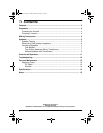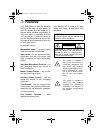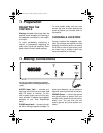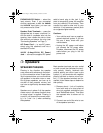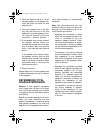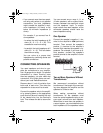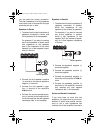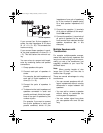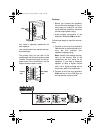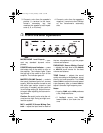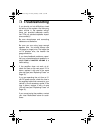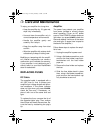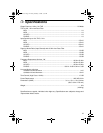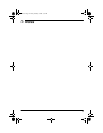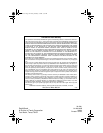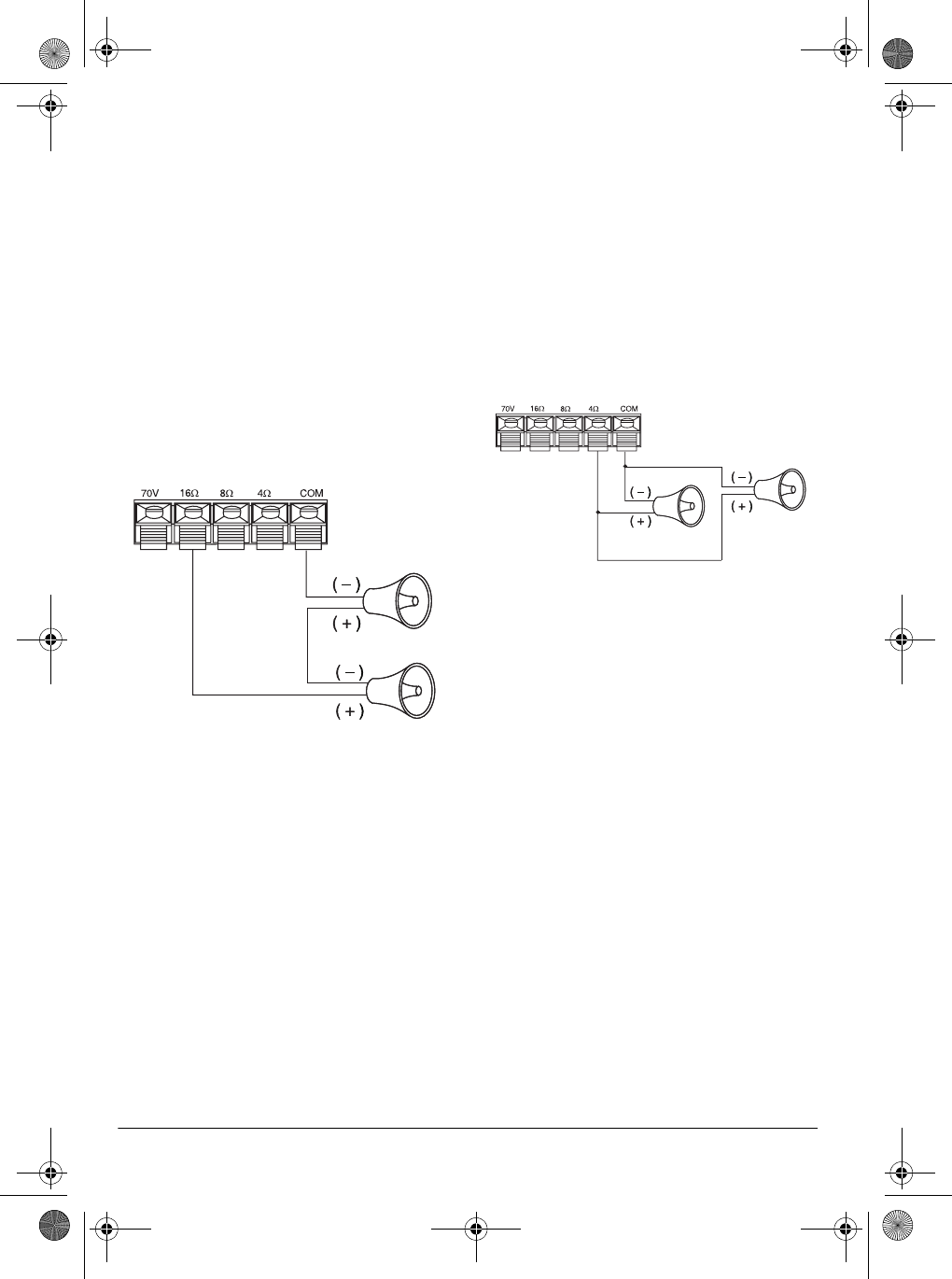
8
you can make the correct connection.
The total impedance of all the speakers
must match one of the amplifier’s output
terminals (
4
Ω
,
8
Ω
, or
16
Ω
)
.
Speakers in Series
1. To determine the total impedance of
speakers connected in series, add
the impedance of all the speakers.
For example, if you want to connect
two 8-ohm speakers in series, add 8
(the impedance of one speaker)
plus 8 (the impedance of the other
speaker) for a total speaker imped-
ance of 16 ohms.
2. Connect the first speaker’s positive
(+) terminal to the second speaker’s
negative (–) terminal.
3. Connect the first speaker’s nega-
tive (–) terminal to the amplifier’s
COM
terminal.
4. Connect the second speaker’s posi-
tive (+) terminal to the amplifier’s ter-
minal that matches the total speaker
impedance (
16
Ω
, in this example).
Speakers in Parallel
1. To determine the total impedance of
speakers connected in parallel,
divide the impedance of one
speaker by the number of speakers.
For example, if you want to connect
two 8-ohm speakers in parallel,
divide 8 (the impedance of one
speaker) by 2 (the number of speak-
ers) for a total speaker impedance
of 4 ohms.
2. Connect the speakers’ negative (–)
terminals together.
3. Connect the speakers’ positive (+)
terminals together.
4. Connect the speakers’ negative (–)
terminals to the amplifier’s
COM
ter-
minal.
5. Connect the speakers’ positive (+)
terminals to the amplifier’s terminal
that matches the total speaker
impedance (
4
Ω
, in this example).
Series and Parallel Combined
If you must hook up more than two
speakers, you might have to use a com-
bination of series and parallel connec-
tions to get a total impedance that
matches one of the amplifier’s terminals.
Two 8
Ω
Speakers
Two 8
Ω
Speakers
32-2001.fm Page 8 Friday, February 4, 2000 7:53 AM




